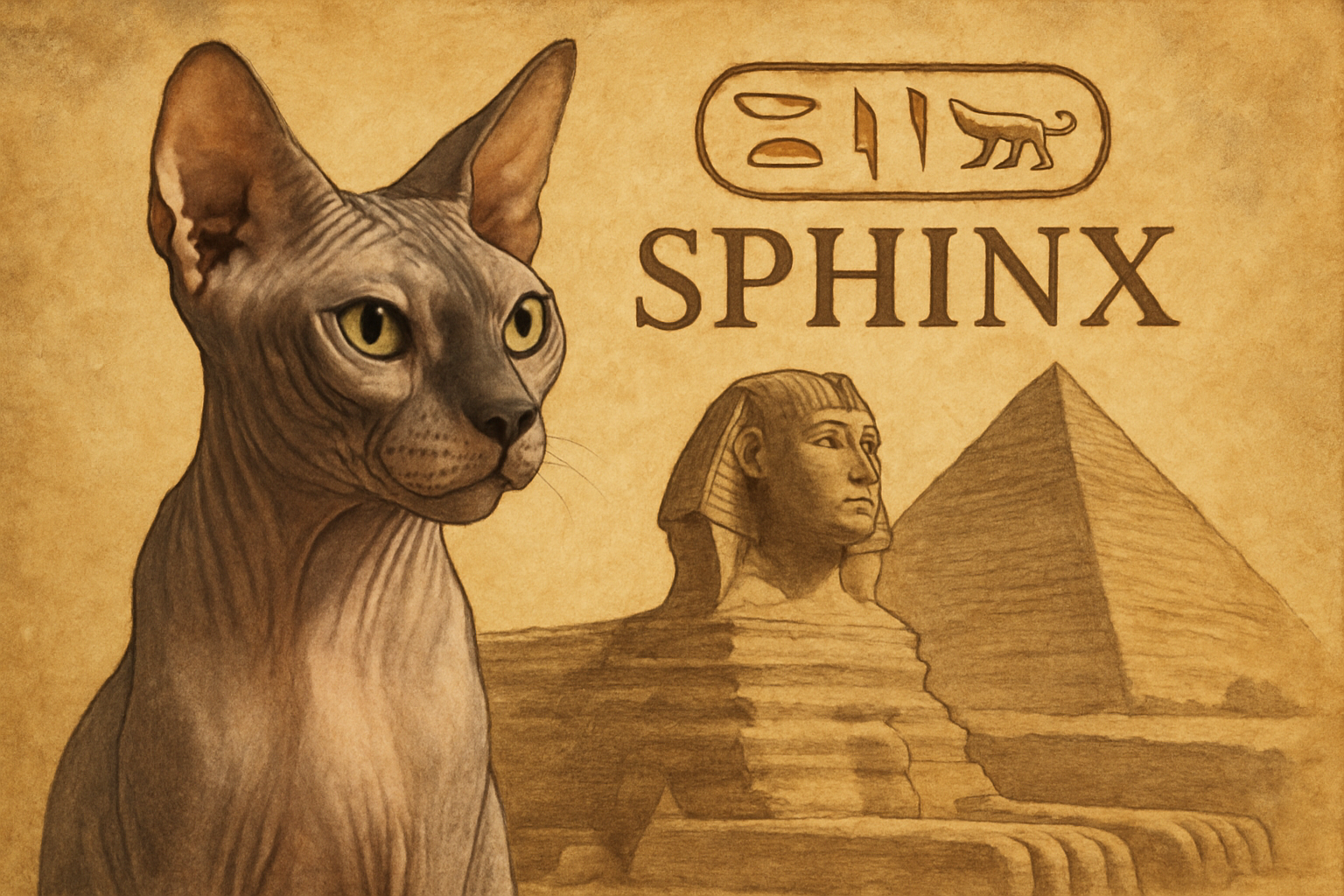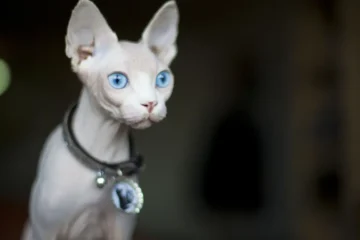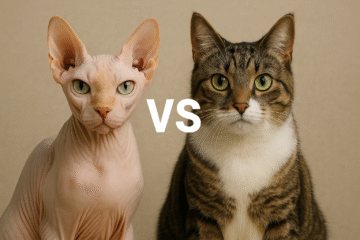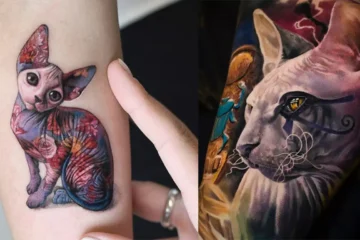Ever wondered why those adorable hairless cats are named after an ancient Egyptian statue? Here’s the fascinating story behind the Sphynx cat’s mysterious name.
Why Do We Call Them Sphynx Cats?
If you’ve ever seen a Sphynx cat, you know they’re pretty special. With their wrinkled, hairless skin and big ears, they look like tiny aliens or maybe something straight out of ancient Egypt. And that’s exactly why they got their name!
The word “Sphynx” comes from those famous stone creatures you’ve probably seen in pictures – you know, the ones with human heads and lion bodies that guard Egyptian pyramids. But here’s the cool part: our modern hairless cats didn’t get this name by accident.
Where Did the Word “Sphinx” Come From?
Let’s go way back in time. The word “sphinx” started with the ancient Greeks. They called these mythical creatures “Σφίγξ” (that’s Greek writing), which came from a word meaning “to squeeze” or “to tighten up.” You can learn more about ancient Greek etymology and how words traveled through different cultures. Pretty fitting when you think about how mysterious and puzzling these creatures were supposed to be!
These weren’t just random monsters either. In ancient Egypt, sphinxes were like super important guardians. They protected temples and tombs, and people thought they held ancient secrets. They were mysterious, powerful, and had this otherworldly look that made you stop and stare.
Sound familiar? That’s exactly what happens when people first see a Sphynx cat!
The Egyptian Cat Connection
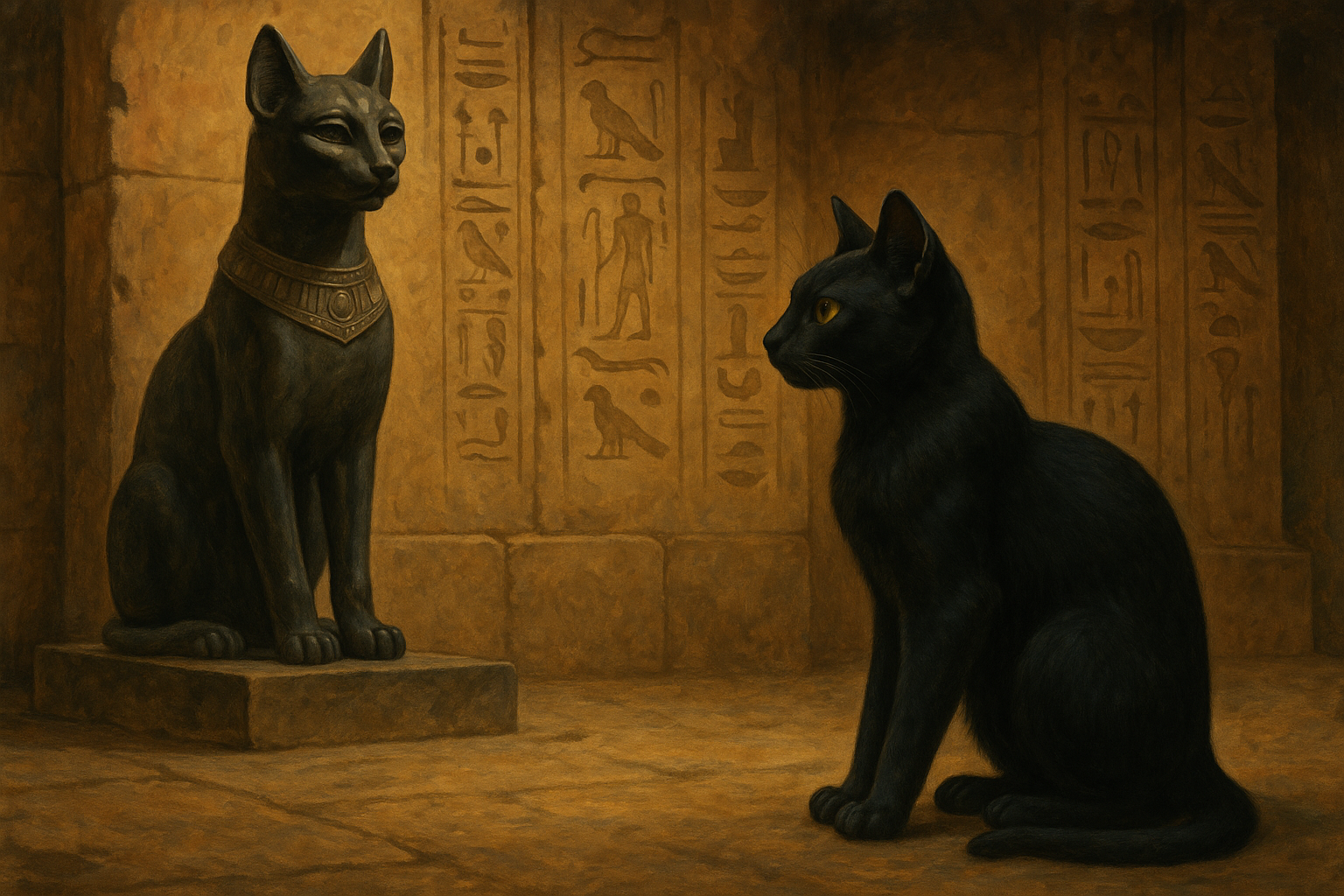
Now here’s where it gets really interesting. Ancient Egyptians absolutely loved cats. They had a cat goddess named Bastet who was originally a fierce lion warrior but later became the gentle cat goddess we know about today. The British Museum has fascinating exhibits about Bastet and ancient Egyptian cat worship. Egyptians thought cats were basically living gods – they protected homes from mice and rats, and they believed cats could ward off evil spirits too.
When you look at those old Egyptian cat statues and drawings, and then look at a Sphynx cat, the resemblance is pretty amazing. Both have that alert, regal look with prominent ears and angular features. Both seem to carry themselves like they know something you don’t.
How a Canadian Kitten Got an Egyptian Name
Here’s where the story gets really cool. The Sphynx cat breed didn’t come from Egypt at all – it started in Toronto, Canada, in 1966. A regular house cat gave birth to a completely hairless kitten they named Prune. This little guy was the result of a natural genetic mutation, and he became the ancestor of all modern Sphynx cats. The Cat Fanciers’ Association has detailed information about the breed’s development and official standards.
At first, people didn’t know what to call these unusual cats. They tried names like “Canadian Hairless,” “Moon Cat,” and “Moonstone Cat.” These names made sense because they described where the cats came from or how they looked.
But breeders eventually realized these cats needed a name that captured something more than just “hairless” or “Canadian.” They needed a name that matched the cats’ mysterious, almost magical appearance.
Why “Sphynx” Was the Perfect Choice
When you really look at a Sphynx cat, several things jump out at you:
They look ancient and wise. Something about their big eyes and serious expression makes them seem like they’ve been around forever, like they know ancient secrets.
They’re incredibly striking. Just like the ancient sphinx statues, these cats demand attention. You can’t ignore them when they walk into a room.
They seem almost supernatural. Let’s be honest – hairless cats look pretty otherworldly. Their warm, wrinkled skin and prominent bone structure can seem almost alien-like to people who’ve never seen one before.
They carry themselves like royalty. Sphynx cats have this natural dignity and grace that reminds you of how ancient Egyptians depicted their cat goddess Bastet.
The Spelling Mystery: Why “Sphynx” and Not “Sphinx”?
You might have noticed that the cat breed is spelled “Sphynx” with a “y,” while the ancient creatures are spelled “Sphinx” with an “i.” This wasn’t an accident!
Cat breeders chose the different spelling for a few smart reasons. First, it helped distinguish their cats from the ancient monuments and mythological creatures. Second, it made it easier to trademark and register the breed name. And third, it sounds exactly the same when you say it out loud, so people still get the connection to ancient Egypt.
It’s like creating a unique brand name that honors the original while being completely its own thing.
What This Name Means for Sphynx Cats Today
Choosing the name “Sphynx” was brilliant marketing, whether the breeders realized it or not. The name immediately tells people these aren’t just regular cats – they’re something special and exotic.
It makes them sound mysterious and interesting. When you tell someone you have a “Sphynx cat,” it sounds way more intriguing than saying you have a “hairless cat.”
It connects them to ancient history. People love the idea that their pet is connected to thousands of years of cat worship and ancient Egyptian culture.
It explains their unique look. The name helps people understand why these cats look so different – they’re supposed to look otherworldly and ancient.
What People Are Really Asking About Sphynx Cat Names
When people search for information about Sphynx cat etymology, they’re usually wondering about a few specific things:
Most people want to know why these cats have such an unusual name. They’re curious about the connection between their modern pet and ancient Egyptian culture. Some people notice the different spelling and wonder if it’s a mistake. Others are interested in how the breed got started and why the name stuck.
Cat lovers often ask questions like “Why are Sphynx cats called Sphynx?” or “What’s the difference between Sphynx and Sphinx?” These are totally normal questions – the connection isn’t obvious unless you know the story!
The Ancient Egyptian Cat Culture
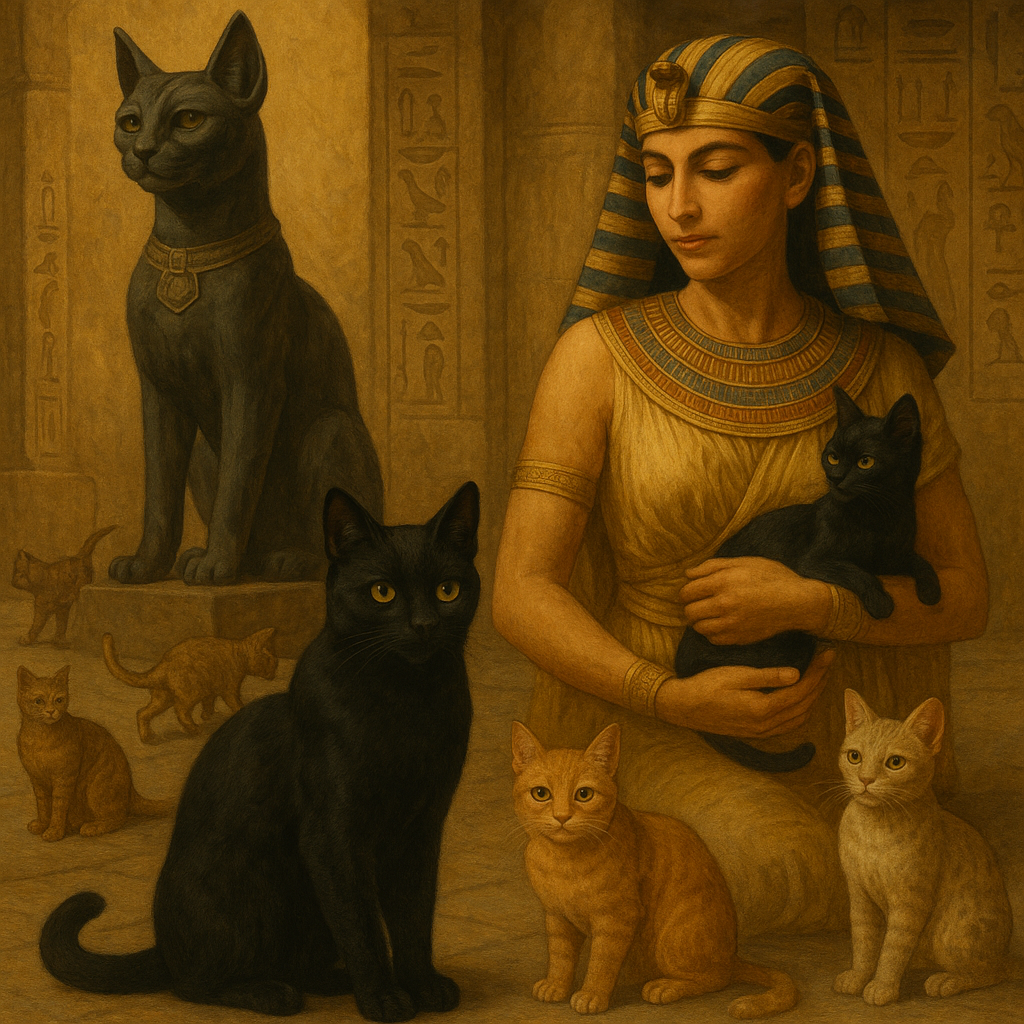
To really understand why “Sphynx” was such a great name choice, you need to know how crazy ancient Egyptians were about cats. And I mean that in the best way possible! The Smithsonian Magazine has excellent articles about ancient Egyptian cat culture and why cats were so revered.
Cats weren’t just pets in ancient Egypt – they were considered sacred animals. Families would mourn their cats like family members when they died. They even mummified cats and buried them with treasures, just like they did with pharaohs!
The goddess Bastet was one of the most popular deities in Egypt. People from all over would travel to her temple to pray and leave offerings. She was the protector of homes, women, and children, and she was always depicted as either a cat or a woman with a cat’s head.
This cultural background makes the name “Sphynx” even more meaningful. It’s not just about the physical resemblance – it’s about connecting these special cats to thousands of years of feline reverence and mystique.
From Canadian Backyard to Egyptian Royalty
The journey from that first hairless kitten named Prune to today’s elegant Sphynx breed is pretty amazing. Breeders worked carefully to develop healthy, consistent lines of hairless cats while maintaining their unique appearance and friendly personalities.
Throughout this process, the name “Sphynx” helped establish these cats as something special. Instead of being seen as “weird hairless cats,” they became “exotic Sphynx cats” with connections to ancient Egyptian royalty.
The name also helped justify the higher prices these cats command. When you’re paying premium prices for a cat, “Sphynx” sounds much more impressive than “Canadian Hairless,” right?
How the Name Influences People’s Perceptions
The Sphynx name has had a huge impact on how people see and treat these cats. Cat shows, breed descriptions, and even veterinary literature all emphasize the mysterious, regal qualities that come with the name.
Owners often say their Sphynx cats act like they know they’re special – and maybe the name has something to do with that! When everyone treats your cat like ancient Egyptian royalty, maybe they start believing it themselves.
The name also helps people get past the initial shock of seeing a hairless cat. Instead of thinking “that’s weird,” the Egyptian connection helps people appreciate the cats’ unique beauty and dignity.
The Global Impact of a Great Name
As Sphynx cats have spread around the world, their name has helped them gain acceptance in different cultures. The connection to ancient Egypt is universally recognized and respected, making these cats appealing to people everywhere.
In some countries, the mystical associations are even stronger. People love the idea of owning a cat that looks like it could have lived in an Egyptian temple thousands of years ago.
What Makes a Good Breed Name?
The success of the “Sphynx” name teaches us a lot about what makes a great breed name. It should be:
Memorable and unique – “Sphynx” definitely stands out from names like “Persian” or “Siamese.”
Connected to the breed’s appearance – The resemblance to ancient Egyptian art is clear.
Easy to pronounce – Everyone knows how to say “Sphynx.”
Rich in associations – The name brings up images of mystery, royalty, and ancient wisdom.
Distinctive – The unique spelling helps it stand apart.
The Future of the Sphynx Name
As these cats continue to grow in popularity, their name becomes even more important. New owners are drawn to the exotic associations, and breeders use the Egyptian connection in their marketing and breed descriptions.
The name has become so strongly associated with hairless cats that most people automatically think “Sphynx” when they see any hairless cat breed, even though there are actually several different hairless breeds around the world.
A Name That Tells a Story
What makes the Sphynx cat etymology so fascinating is how it brings together ancient culture and modern pet ownership. Every time someone says “Sphynx cat,” they’re connecting their living room to ancient Egyptian temples, their pet to thousands of years of cat worship, and their modern life to one of humanity’s oldest relationships with animals.
The name works because it honors both what these cats look like and how special they are to their owners. It acknowledges that hairless doesn’t mean ugly – it means mysterious, unique, and wonderful in a completely different way.
Wrapping Up the Mystery
So there you have it – the full story behind why your hairless cat shares a name with ancient Egyptian guardians. From a Greek word meaning “to tighten up” to Egyptian sphinx statues to Canadian kitten named Prune to the elegant Sphynx cats we know today, it’s been quite a journey.
The next time someone asks why these cats are called Sphynx, you can tell them it’s because they look like they stepped right out of an ancient Egyptian temple – mysterious, regal, and absolutely unforgettable. And honestly, once you know a Sphynx cat, that description makes perfect sense.
Whether you’re thinking about getting a Sphynx cat, you already have one, or you’re just curious about unusual pet names, remember that behind every great breed name is a story that connects our modern lives to ancient cultures and timeless human fascination with our animal companions.
The Sphynx cat name isn’t just a label – it’s a bridge between past and present, between ancient Egyptian temples and contemporary cat cafes, between mythological creatures and the very real, very warm, very lovable hairless cats that steal our hearts today.

